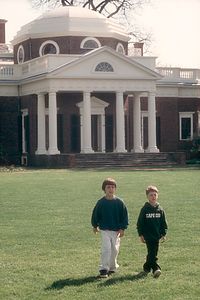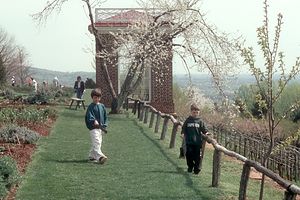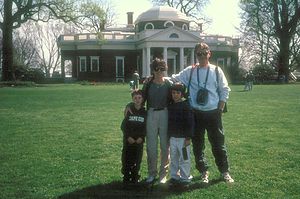- Home
- About
- Map
- Trips
- Bringing Boat West
- Migration West
- Solo Motorcycle Ride
- Final Family XC Trip
- Colorado Rockies
- Graduates' XC Trip
- Yosemite & Nevada
- Colorado & Utah
- Best of Utah
- Southern Loop
- Pacific Northwest
- Northern Loop
- Los Angeles to NYC
- East Coast Trips
- Martha's Vineyard
- 1 Week in Quebec
- Southeast Coast
- NH Backpacking
- Martha's Vineyard
- Canadian Maritimes
- Ocracoke Island
- Edisto Island
- First Landing '02
- Hunting Island '02
- Stowe in Winter
- Hunting Island '01
- Lake Placid
- Chesapeake
- Provincetown
- Hunting Island '00
- Acadia in Winter
- Boston Suburbs
- Niagara Falls
- First Landing '99
- Cape Hatteras
- West Coast Trips
- Burning Man
- Utah Off-Roading
- Maui
- Mojave 4WD Course
- Colorado River Rafting
- Bishop & Death Valley
- Kauai
- Yosemite Fall
- Utah Off-Road
- Lost Coast
- Yosemite Valley
- Arizona and New Mexico
- Pescadero & Capitola
- Bishop & Death Valley
- San Diego, Anza Borrego, Joshua Tree
- Carmel
- Death Valley in Fall
- Yosemite in the Fall
- Pacific Northwest
- Utah Off-Roading
- Southern CA Deserts
- Yosemite & Covid
- Lake Powell Covid
- Eastern Sierra & Covid
- Bishop & Death Valley
- Central & SE Oregon
- Mojave Road
- Eastern Sierra
- Trinity Alps
- Tuolumne Meadows
- Lake Powell Boating
- Eastern Sierra
- Yosemite Winter
- Hawaii
- 4WD Eastern Sierra
- 4WD Death Valley +
- Southern CA Deserts
- Christmas in Tahoe
- Yosemite & Pinnacles
- Totality
- Yosemite & Sierra
- Yosemite Christmas
- Yosemite, San Diego
- Yosemite & North CA
- Seattle to Sierra
- Southwest Deserts
- Yosemite & Sierra
- Pacific Northwest
- Yosemite & South CA
- Pacific Northwest
- Northern California
- Southern Alaska
- Vancouver Island
- International Trips
- Index
- Tips
- Books
- Photos/Videos
- Search
- Contact
Monticello, VA
Tuesday, April 7, 1998 - 3:00am by Lolo
10 miles and 0.25 hours from our last stop
Travelogue
For some reason, I was very much looking forward to seeing Monticello. I am a great admirer of Thomas Jefferson and feel that he was probably the closest thing to a Renaissance man that the United States has ever had and probably ever will. He was a statesman, scientist, architect, inventor, writer, and probably much more.
 Boys at MonticelloWe started our tour sort of in reverse--at Jefferson's grave site. Although the small family burial ground is surrounded by a fence, you can easily spot the tall obelisk, which is Thomas Jefferson's grave. What I found quite interesting was what he chose to list as his major life achievements: author of the Declaration of Independence, author of the Statue of Virginia for Religious Freedom, and Father of the University of Virginia. No mention was made of his Presidency. Another interesting fact was that he died on the 50th anniversary of the signing of the Declaration of Independence.
Boys at MonticelloWe started our tour sort of in reverse--at Jefferson's grave site. Although the small family burial ground is surrounded by a fence, you can easily spot the tall obelisk, which is Thomas Jefferson's grave. What I found quite interesting was what he chose to list as his major life achievements: author of the Declaration of Independence, author of the Statue of Virginia for Religious Freedom, and Father of the University of Virginia. No mention was made of his Presidency. Another interesting fact was that he died on the 50th anniversary of the signing of the Declaration of Independence.
After the gravesite, we toured the beautiful grounds of the estate. We wandered along what was once Mulberry Row, where during Jefferson's lifetime, more than 150 slaves lived and worked. The gardens and orchards on the property have been restored to their original appearance. The ever-curious Jefferson once used these gardens as an experimental laboratory for plants from around the world. He grew over 170 fruit and 330 vegetable varieties.
 Boys wandering the gardenWe entered a small, square brick building with windows on all four sides that was positioned right above the gardens. From the wooden chairs inside, we gazed out over the beautiful grounds of Monticello, as I'm sure Jefferson did on many occasions. This was Jefferson's reading room. It was definitely a place you could feel very peaceful in.
Boys wandering the gardenWe entered a small, square brick building with windows on all four sides that was positioned right above the gardens. From the wooden chairs inside, we gazed out over the beautiful grounds of Monticello, as I'm sure Jefferson did on many occasions. This was Jefferson's reading room. It was definitely a place you could feel very peaceful in.
Unlike Mount Vernon, the tours of Monticello are guided. They are 30-minutes long and run every 5 minutes, so they can really move a lot of people through quickly. However, since the tours are limited to 25 people at a time, you really do get to hear the guide and ask any questions you like. We didn't have to wait long at all.
 Family at MonticelloThe house itself was actually designed by Jefferson. In fact, he liked to refer to it as his "essay in architecture." Most of the houses of his day were of the Georgian style, but he chose to build his in the classical style of ancient Rome. However, after a trip to rance in 1789, he came back with all new ideas about architecture and totally redesigned it. He spent 40 years designing and redesigning it. The final touch was the dome, which was completed in 1809.
Family at MonticelloThe house itself was actually designed by Jefferson. In fact, he liked to refer to it as his "essay in architecture." Most of the houses of his day were of the Georgian style, but he chose to build his in the classical style of ancient Rome. However, after a trip to rance in 1789, he came back with all new ideas about architecture and totally redesigned it. He spent 40 years designing and redesigning it. The final touch was the dome, which was completed in 1809.
The inside of the house was filled with furnishings and household objects owned by Jefferson and his family. It was lovely. One of the things the kids liked best was the Great Clock in the entrance hall. The clock actually had two faces--one inside and one on the outside of the house. The clock on the outside only had an hour hand, because Jefferson thought that that was accurate enough for the outdoor laborers. Every hour, a Chinese gong would chime loud enough for the slaves to hear as far as three miles away. The interior clock was really interesting. It was powered by two sets of cannonball-like weights, which hung on both sides of the front doors. Along the walls were markers with the names of the days of the weeks and the hours of the day. The clock would be wound on Sundays by raising the weights to the ceiling. Then, throughout the week the weights would gradually descend past the markers on the wall telling you the hour and day. The one glitch was that Jefferson designed this clock for a home that had higher ceilings, so he had to cut on hole in the floor and put the Saturday marker in the basement. I guess even Jefferson wasn't perfect.
Another favorite was the contraption Jefferson used to make copies of his letters. It was a device that held two sheets of paper with two connected pens. As Jefferson wrote with one pen, the other pen followed and made an exact copy on the other sheet. Very ingenious. There were lots of other interesting things to explore in the 11 rooms of the tour.
Monticello was everything that I had hoped it would be. It definitely was worth the visit.
Description
Monticello, which is located approximately 2 miles southeast of Charlottesville, was the beloved home of Thomas Jefferson. He chose the top of an 850-foot-high mountain where he played as a boy as the site for his estate. Monticello, which means "little mountain" was designed by Jefferson himself. He referred to it as his "essay in architecture." Rather than the popular Georgian style of his day, he chose to build his home in the classical style of ancient Rome. However, after visiting France and the homes of the nobility there, he returned home with totally new ideas about architecture and completely redesigned his home. After 40 years of designing and redesigning, Monticello was completed in 1809 with the erection of the dome. Monticello is the remarkable integration of Jefferson's love for classical architecture and his passion for modern innovation.
Most of the furnishings and household objects on display were owned by Jefferson or his family. The interior decoration reflects much about the ideals of Jefferson. One of Monticello's most memorable features is the Great Clock, which Jefferson himself designed. The clock has a face both on the exterior and interior of the house. On the outside wall, the clock has only an hour hand, because Jefferson felt that was accurate enough for outdoor laborers. The clock is attached to a Chinese gong that chimed the hour loud enough for field slaves to hear it three miles away. The inside face of the clock, which appears in the entrance hall, has a minute hand and even a second hand. The clock is driven by two sets of cannonball-like weights, which hang on both sides of the front doors. The clock is wound on Sundays by raising the weights to the ceiling. Throughout the week, the weights descend past markers on the wall indicating the day of the week and even the approximate hour. Unfortunately, the clock was designed for a home with much higher ceilings, so Jefferson had a hole cut in the floor and the Saturday marker is located in the basement.
Another interesting innovation of Jefferson's is a copying machine located in his office. The machine holds two sheets of paper with two connected pens. As Jefferson wrote with one pen, the other pen followed and made an exact copy on the other sheet. Jefferson did not actually invent this machine but he did help the inventor make improvements to it. There are many other interesting things to explore in the 11 rooms of the tour.
Monticello is open 7 days a week, every day of the year, except Christmas. The 30-minute guided tours of the home are limited to 25 people at a time and run every 4-5 minutes. Admission to the House and Gardens is $14 for adults and $6 for children from 6-11. Children 5 and under are free.
After leaving the House, you can tour the beautiful grounds. Jefferson's garden and orchards have been restored to their original appearance. During Jefferson's lifetime, these gardens were not only a source of food, but an experimental laboratory of ornamental and useful plants from around the world. He grew over 170 fruit and 330 vegetable varieties. 45-minute guided Garden Tours (included in the admission fee) are available from April through October.
Guided walking tours (also included in the admission fee) are also given through Mulberry Row, the center of plantation life at Monticello. Along this row, free artisans and 150 slaves lived and labored in shops such as a dairy, nail factory, smokehouse, blacksmith shop, etc. and slave dwelling. These tours focus the African-American community at Monticello and the economic operation of this 5,000-acre plantation.
Jefferson's grave is located in the family burial ground at Monticello. Jefferson died on July 4, 1826, the fiftieth anniversary of the signing of the Declaration of Independence. After his death, a Jefferson family member found a sketch he made, which contained instructions for his tombstone. He wished to have his grave marked by an obelisk with an inscription listing what he felt to be his three major accomplishments: author of the Declaration of Independence, author of the Statue of Virginia for Religious Freedom, and Father of the University of Virginia. No mention was made of his Presidency.
- ‹ previous
- 7 of 13
- next ›
Monticello location map
Javascript is required to view this map.
